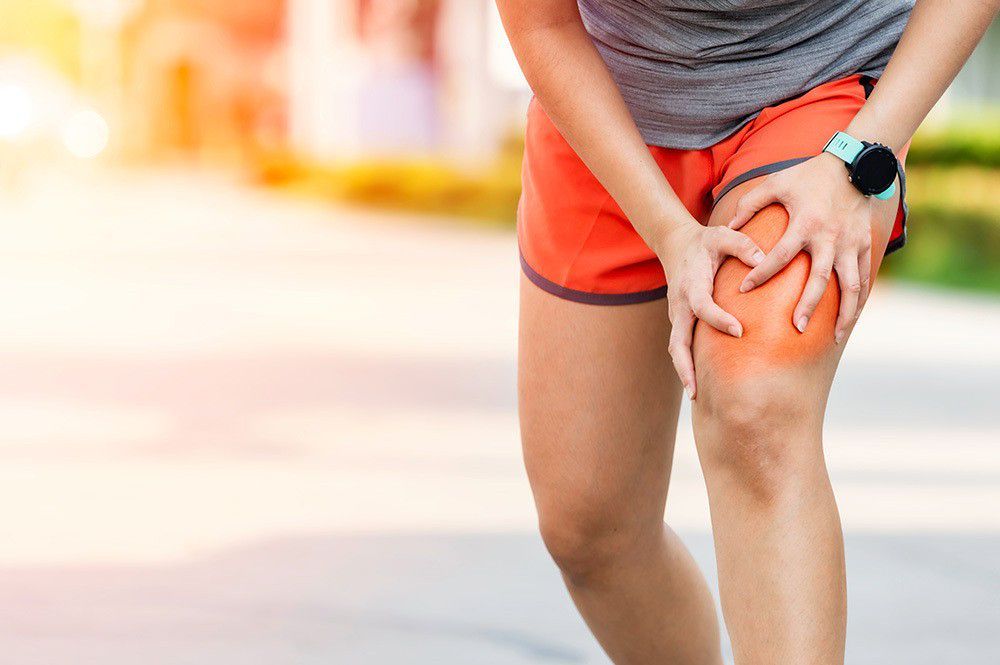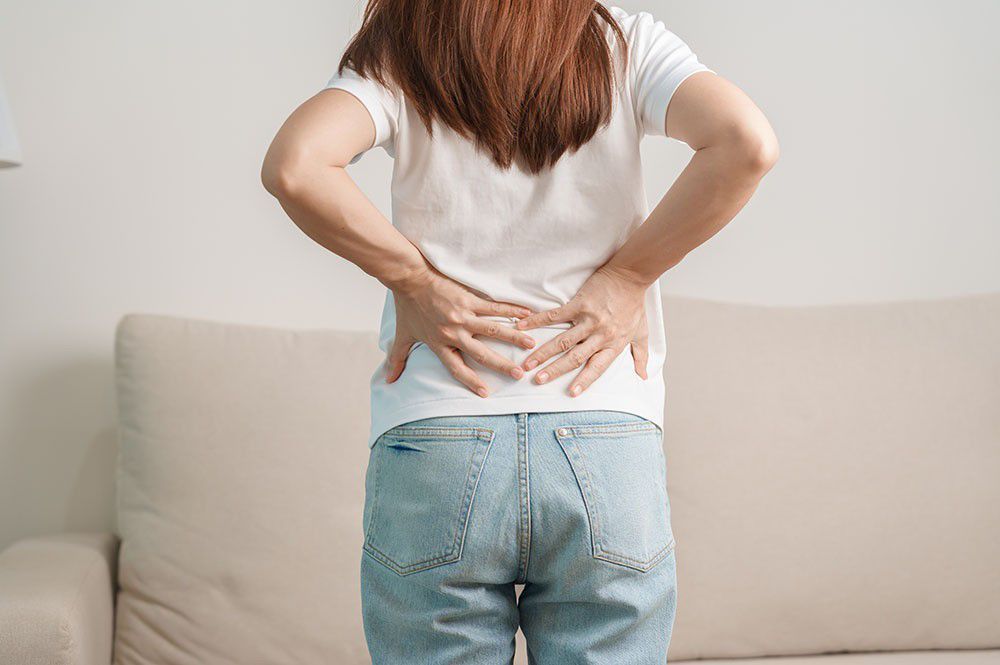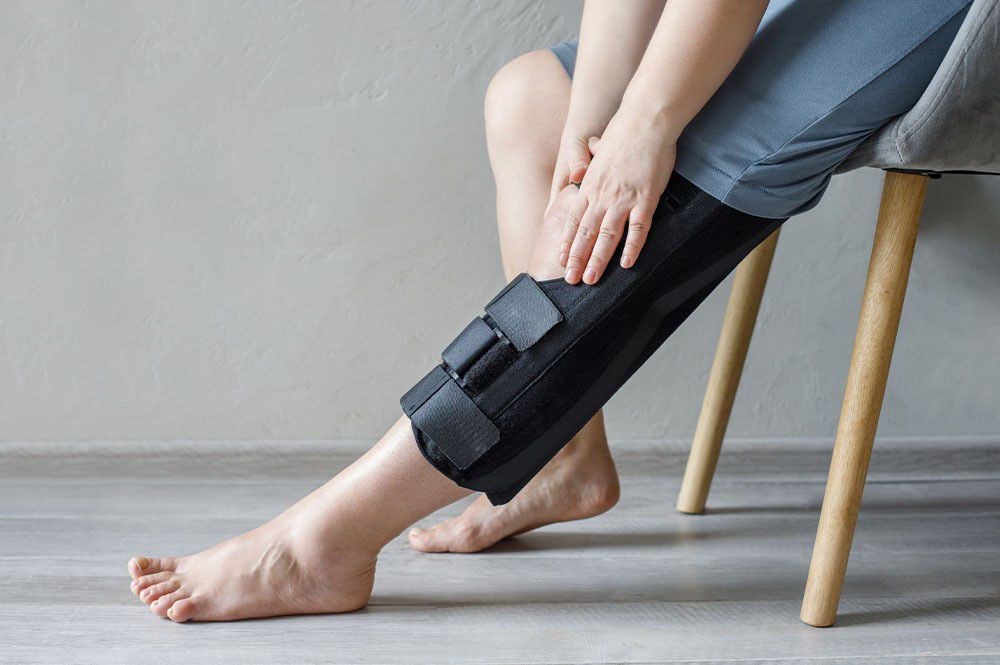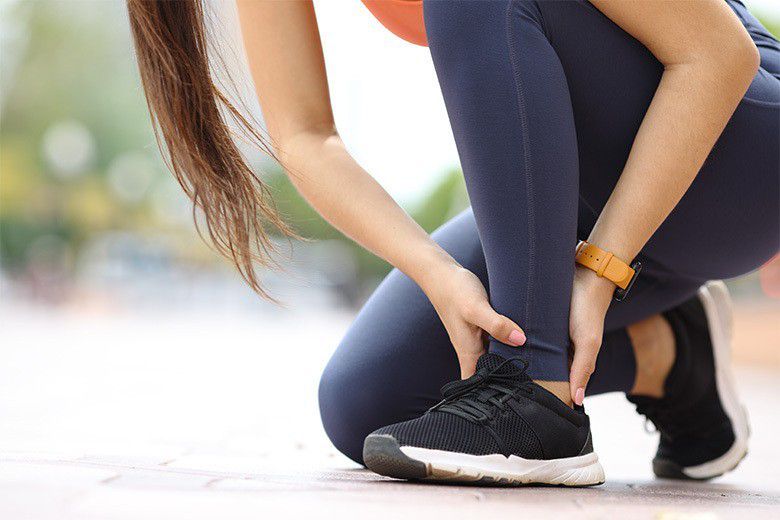Thigh muscle strain: how to recognize it and what to do?

- 1 How to intervene?
- 2 Good prospects
- 3 Stretch signals
- 4 Treatment
Diagnosis of posterior thigh muscle strain
The muscles in the back of the thighs (hamstrings) can be overstressed during running.
The posterior thigh muscles extend the hip and flex the knee backward.
While running, there is active involvement of the muscles in the lifting phase of the leg, from the moment the knee is perpendicular to the ground, and in the lengthening phase, when the thigh is braked during its maximum flexion.
An injury can occur in these two phases, particularly during sprints when the posterior thigh muscles contract suddenly and violently: this causes sudden pain in the back of the thigh. A hamstring flexor injury can also develop over the long term, usually caused by improper stretching and flexibility training.
Doctors make the diagnosis based on the subject’s symptoms and test results. Sometimes, magnetic resonance imaging (MRI) is also needed.
When a hamstring flexor strain occurs, treatment consists of:
- Ice rest, appropriate wearing of tight compression stockings, and support to support the part are needed immediately after the injury.
- Rehabilitation
- Nonsteroidal anti-inflammatory drugs or other pain relievers are used to relieve pain.
When pain is felt, it is essential to be careful when stretching the posterior thigh muscles. Once the pain has completely subsided, you can gradually stretch both the quadriceps and the hamstrings. Avoid running or jumping until you fully recover muscle strength and range of motion.
The road to recovery is a daily journey, and although recovery can occur gradually, a thigh muscle injury may take several months to heal fully.
Posterior thigh strain: diagnosis with good prospects for recovery
Initially, there is a feeling of widespread tightness in the thigh, with the sensation that the entire region is “stuck.” This phenomenon usually occurs during a sudden and abrupt movement, accompanied by a painful pinching of the muscles, as the movement has caused a stretch in the thigh area. Such an injury represents one of the most common problems in sports, flanked by muscle injuries, sprains, and bruises.
It is important to note that this type of injury does not affect athletes exclusively; practically anyone, over time, can experience a thigh strain, whether during sports or, for example, a sudden movement after prolonged sedentary work.
What is a “hamstring flexor stretch”?
In general, a muscle is made up of several muscle fibers, which, in turn, are made up of smaller units called myofibrils. When a stretch occurs, the muscle fibers overstretch beyond their elasticity and get damaged, leading to the typical symptoms of a muscle strain, caused by inflammation of the overstretched tissue. Stretches occur frequently and are localized in the different muscle groups of the thigh area.
What else could be behind the pain in the thigh area?
- Injured muscle fiber: torn muscle fibers are the most important differential diagnosis. An injury is the rupture of some muscle fibers, leading to bleeding into the muscle tissue. Excruciating pain and cramp-like contraction of the affected muscles prevent the movement from being completed. The result is a severe limitation of movement.
- The muscle fibers in a hamstring flexor stretch remain intact, so it is less severe than a rupture of individual muscle fibers or even an entire muscle. In addition, there is no bleeding.
- A hematoma can also cause pain when the damaged muscles are strained. This is caused, for example, by a blunt instrument or collision, where an injury to the blood vessels supplying the muscle causes bleeding. Pain caused by a bruise occurs primarily because the resulting bruise puts pressure on the muscle.
What causes a thigh flexor strain?
A thigh strain usually occurs when muscles that are already tight are overextended due to incorrect exertion. Sports that require sudden movements are more likely to cause thigh strains, such as a sudden change between fast sprints, lunges, and braking, for example, in soccer, badminton, or tennis.
Other situations that can cause a thigh strain include:
- A direct impact on the muscle during a collision can generate a stretch in the thigh area.
- Another possible trigger is overexertion and muscle fatigue caused by repeated movements. If the muscles are irritated due to sports activity or physical exertion at work, this can trigger an inflammatory state.
- Prolonged sitting or one-sided training can cause muscle imbalance. If the trunk and hip muscles shorten, even a seemingly innocuous movement can lead to overstretching and, consequently, to a strain.
- Static imbalance in the spine area increases the risk of a thigh strain and, therefore, requires appropriate treatment.
- Finally, previous injuries may predispose you to hamstring flexor strain, especially if they have not been fully healed.
How does a thigh strain manifest itself?
Thigh muscle strain is often preceded by the hardening of the muscles, in which overstretching of the affected muscle, causes reflex shortening and stiffening.
The initial pull increasingly turns into persistent pain, and when strain is applied, the muscle contracts spasmodically. Slight swelling may also occur in some cases.
The symptoms disappear at rest, but as soon as the muscle is activated, it causes increasingly aggravating pain, which may extend to the pelvis or calf. Abnormal sensations such as tingling, hypersensitivity, or skin numbness may rarely occur.
Stretching or relaxation exercises do not bring any improvement at this stage. In addition, maximum muscle strength in the thigh is reduced, range of motion is restricted, and affected people are often unable to walk correctly.
What happens after the diagnosis of “thigh strain”?
The RICE protocol (Rest, Ice, Compression, and Elevation) is the first thing to do for a thigh strain.
It is essential to protect the muscles immediately to prevent further damage. Application of ice, the elevation of the leg, and compression using an elastic bandage help reduce swelling and bleeding. In addition, the bandage provides a supportive function for the affected muscle.
Strains in the back of the thigh often experience healing in a few days. However, if symptoms are intense or show no improvement, it is always advisable to consult a physician or physical therapist promptly. Early treatment plays a significant role in significantly improving the prognosis.
Muscle strain or tear of the thigh flexors
To best tailor treatment, it is essential to make an accurate diagnosis, distinguishing a thigh strain from a muscle injury.
To this end, the patient is first asked for details regarding the trigger and type of symptoms, followed by an in-depth history through a complete physical examination.
The most straightforward way to differentiate between a stretch and a tear in the thigh muscles is through imaging techniques.
Muscle ultrasound or better magnetic resonance imaging (MRI) are the most sensitive procedures, especially the latter, because they can detect the smallest bleeding or inflammation.
MRI works by generating a magnetic field that, on the one hand, shows soft tissue contrast much better than a conventional X-ray image and, on the other hand, avoids exposure to radiation.
The 4 levels of severity of a thigh muscle injury
Imaging diagnosis allows muscle injury to be classified into four different levels of severity and type of injury to the posterior thigh muscles.
Grade 0 – No muscle changes: injuries are either too minor to be visible or hidden.
Grade 1 – Microscopic cracks: indicate excessive stretching leading to microtrauma and mild pain. Movement restrictions are minimal. In these first two cases, we speak of a muscle strain, not a muscle injury.
Grade 2 – Partial tears of individual muscle fibers, bleeding, swelling: in this case, the injury causes immediate pain, and the affected muscles can be used only to a limited extent. Healing takes several weeks.
Grade 3 – Rupture of the entire muscle, bleeding, swelling, often with tendon injury: excruciating, searing pain, particularly intense while attempting to support weight, impairs all movement, including simple walking. The recovery period varies from several weeks to several months.
Muscle strain of the posterior thigh muscles: treatment
After a diagnosis is established, a conservative treatment plan is developed specifically tailored to manage posterior thigh muscle strain.
During the first 48-72 hours after injury, it is critical to ensure rest and apply ice to protect the thigh.
Light activity can be introduced gradually until pain is felt, thus avoiding the risk of more severe muscle injury.
Topical ointments are available to relieve pain, while Kinesiotape or taping works as a support to relax and relieve discomfort.
Physiotherapy, recommended after the acute phase, aims to maintain and improve mobility and strengthen muscles through stretching and muscle-strengthening exercises. Proper initial treatment can often achieve significant improvement within a week. Sports activity should only resume after the rest period agreed with the doctor. Without proper treatment and protection, you run the risk of worsening the condition, possibly causing permanent muscle damage in severe cases.
There are various therapies for the treatment of a muscle strain
Treatment is usually conservative: immobilization and cooling, and if necessary, compression bandaging. In most cases, anti-inflammatory drugs are also administered.
The chances of recovery from a muscle strain are excellent.
It is essential to adhere to the treatment/physiotherapy plan, as failure to do so can lead to more muscle damage with further restrictions on movement.
The physical therapist can use manual or electromedical-based muscle relaxation techniques:
-decontracting massage therapy and/or lymphatic drainage;
-manual therapy techniques,
-stretching or PNF techniques,
-diathermy,
-hyperthermia,
-ultrasound therapy,
-magnetotherapy,
-decontracting electrostimulation,
-kinesiotaping
-cryotherapy,
-analgesic electrotherapy.
Except for cryotherapy, taping, kinesiotaping, and cold diathermy in the early post-injury or post-surgery stages, most physiotherapy interventions should always start at least 48-72 hours after injury.
It is also fundamental to dose the phases of muscle recovery and muscle re-training, as well as to maintain (in the case of athletes) good muscle tone for unaffected muscles and generally good cardiorespiratory training.
How to effectively prevent a thigh strain?
Although it can be a challenge, some activities can help prevent thigh strains. Below are some recommended practices to follow.
- Proper warm-up and stretching before exercise.
- Regular training (better muscle strength, coordination, and endurance mean a lower risk of injury).
- Practice a new sport or slow return to activity, as muscles still need to get used to sport-specific movements initially.
- Proper technique for movement sequences prevents incorrect loading and overloading.
- For each training section, maintain sufficient recovery time.
- Know your performance limits (exhausted muscles don’t compensate as well for sudden forces)!
- Stretch regularly to prevent muscle shortening.









